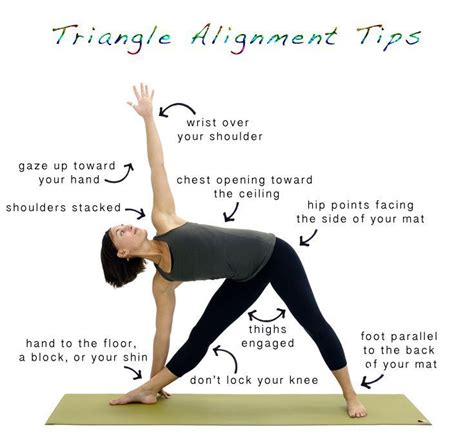Mastering Yoga Alignment: A Comprehensive Guide for Safe and Effective Practice
Introduction
Yoga alignment is the foundation of a safe and effective practice. It focuses on positioning the body in a way that maximizes the benefits of each pose while minimizing the risk of injury. Proper alignment is not just about looking good in a posture; it’s about feeling balanced, stable, and connected. Whether you are a beginner or a seasoned practitioner, understanding yoga alignment is crucial for deepening your practice and improving your overall well-being. This article explores the key principles, historical context, and current practices related to yoga alignment, offering a comprehensive guide for practitioners at all levels.
Key Concepts in Yoga Alignment
Understanding yoga alignment requires familiarity with several key concepts:
- Foundation: The body part(s) in contact with the ground. Ensuring a solid foundation is critical for stability and balance.
- Engagement: Activating specific muscles to support the body and maintain alignment.
- Spinal Integrity: Maintaining the natural curves of the spine throughout the practice.
- Symmetry: Balancing both sides of the body to prevent overuse or underuse of one side.
- Breath Integration: Synchronizing breath with movement to enhance flow and stability.
Historical Context of Yoga Alignment
Yoga alignment principles have evolved over centuries. Traditional yoga, as taught by early yogis, was less concerned with strict anatomical alignment and more focused on spiritual and energetic alignment. As yoga gained popularity in the West, particularly in the 20th century, a shift occurred. Modern yoga pioneers such as B.K.S. Iyengar emphasized precision and anatomical alignment, integrating knowledge from physical therapy and Western anatomy. This shift aimed to make yoga safer and accessible to a wider audience, adapting ancient practices to modern lifestyles and bodies.
Current State Analysis: Approaches to Yoga Alignment
Today, there are various schools of thought on yoga alignment:
| Approach | Philosophy | Focus | Examples |
|---|---|---|---|
| Traditional Hatha | Holistic integration of mind, body, and spirit | Breath and energy flow | Basic alignment cues; less focus on anatomy |
| Iyengar | Precision and structural alignment | Use of props and modifications | Blocks, straps, detailed pose breakdowns |
| Vinyasa/Flow | Fluid movement and synchronization with breath | Alignment within dynamic sequences | Focus on transitions and breath coordination |
| Ashtanga | Set sequences and intense physical practice | Consistency and progressive alignment | Same poses daily; adjustments to deepen practice |
| Restorative | Passive postures for deep relaxation | Gentle support and comfort | Bolsters, blankets, minimal engagement |
Practical Applications of Yoga Alignment
Proper alignment varies depending on the style and intention of the practice. Below are examples of key alignment cues for common yoga poses:
- Downward Dog (Adho Mukha Svanasana): Spread fingers wide, press into the hands, lift hips high, and draw heels toward the ground while keeping the spine long.
- Warrior II (Virabhadrasana II): Align front heel with the arch of the back foot, engage the core, extend arms parallel to the floor, and gaze over the front hand.
- Mountain Pose (Tadasana): Distribute weight evenly across both feet, engage the quadriceps, lengthen the spine, and draw shoulder blades down.
- Tree Pose (Vrksasana): Root down through the standing leg, bring the other foot to the ankle or thigh (avoiding the knee), and find balance by engaging the core.
- Plank Pose: Align shoulders over wrists, engage the core and legs, keep the neck neutral, and maintain a straight line from head to heels.
Case Studies: Alignment Adjustments in Practice
Case studies demonstrate how alignment principles are applied and modified based on individual needs:
| Case Study | Issue | Adjustment |
|---|---|---|
| Beginner with Tight Hamstrings | Difficulty straightening legs in forward folds | Use of blocks under hands and slight knee bend to maintain spinal integrity |
| Advanced Practitioner with Wrist Pain | Discomfort in weight-bearing poses like Downward Dog | Modification to use forearms or shift weight distribution |
| Person Recovering from Injury | Limited range of motion in shoulder | Props and modifications to support movement without strain |
Stakeholder Analysis: Instructors, Practitioners, and Health Professionals
Alignment in yoga impacts various stakeholders:
- Instructors: Responsible for guiding students safely through postures. Must balance individual adjustments with class flow.
- Practitioners: Benefit from understanding alignment principles to deepen practice and prevent injuries.
- Health Professionals: Physical therapists and chiropractors often collaborate with yoga instructors to create tailored alignment strategies for patients.
Implementation Guidelines for Yoga Alignment
To implement effective yoga alignment in your practice:
- Focus on Foundations: Establish a stable base in each pose, paying attention to the positioning of feet, hands, or any other body parts touching the ground.
- Use Props Wisely: Incorporate blocks, straps, and other props to support alignment, especially when flexibility or strength is a limitation.
- Engage the Core: Maintain core activation in all poses to protect the spine and provide stability.
- Adjust According to Anatomy: Recognize that every body is different; modifications are not only acceptable but necessary for safe practice.
- Listen to Your Body: Respect physical limits and avoid pushing beyond your capacity, focusing instead on gradual progress.
Ethical Considerations in Yoga Alignment
Ethical issues related to yoga alignment include:
- Body Autonomy: Instructors must respect a student’s comfort level and boundaries when offering physical adjustments.
- Inclusivity: Alignment cues should accommodate a diverse range of bodies, abilities, and experience levels, ensuring that all practitioners feel included and supported.
- Safety vs. Aesthetics: Prioritizing how a pose feels over how it looks promotes a healthier, more sustainable practice.
Limitations and Future Research
While alignment principles are essential for safe yoga practice, there are limitations. Not every pose is suitable for every body, and strict adherence to alignment cues may not accommodate individual anatomical differences. Future research in yoga alignment could explore the long-term effects of alignment practices on different body types, ages, and physical conditions. Additionally, the integration of biomechanical data through wearable technology could provide real-time feedback on alignment, enhancing safety and effectiveness in yoga practice.
Expert Commentary: Insights from Leading Yoga Professionals
Leading yoga instructors and therapists emphasize that alignment is an ongoing, individualized journey. It is less about achieving a ‘perfect’ pose and more about developing body awareness and adaptability. Experts agree that understanding one’s body mechanics, practicing mindfully, and seeking guidance when needed are key to a sustainable and fulfilling yoga practice.




